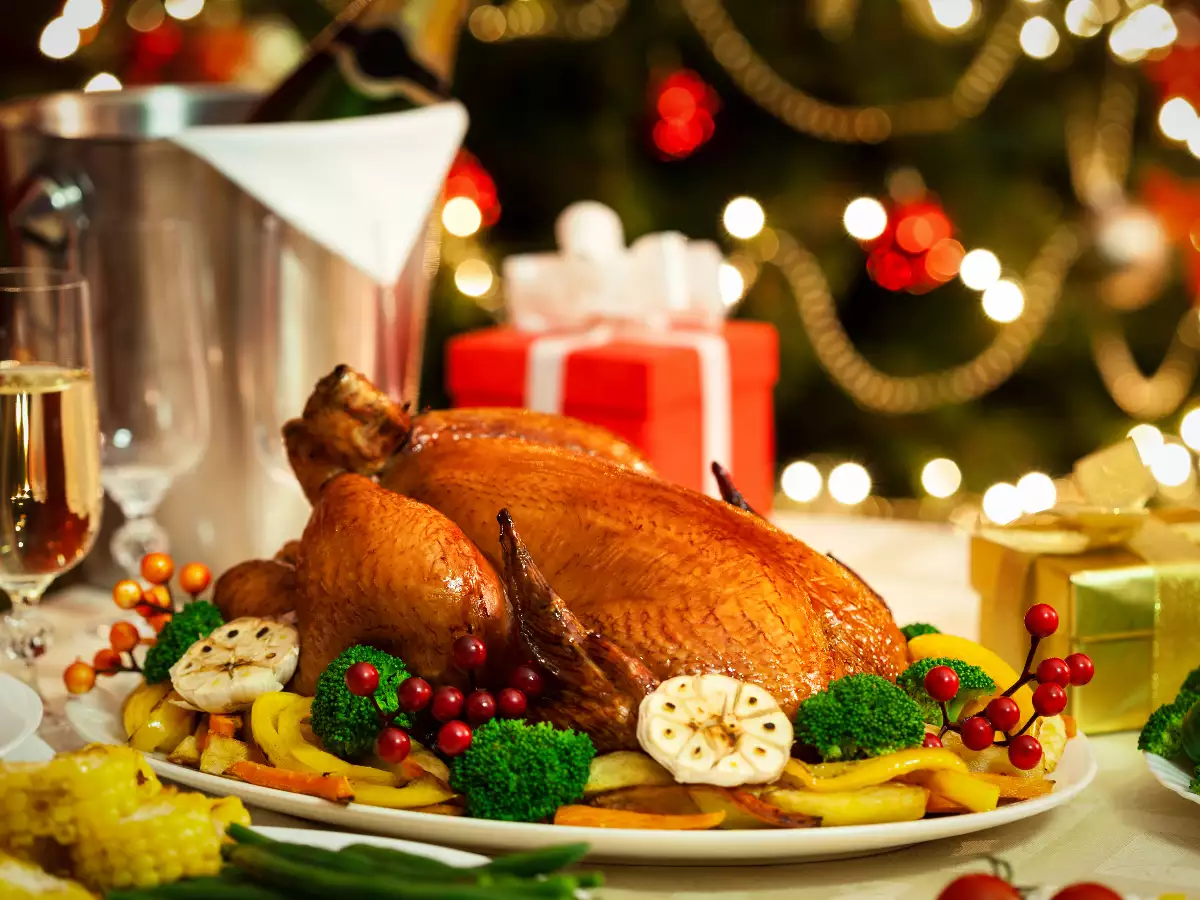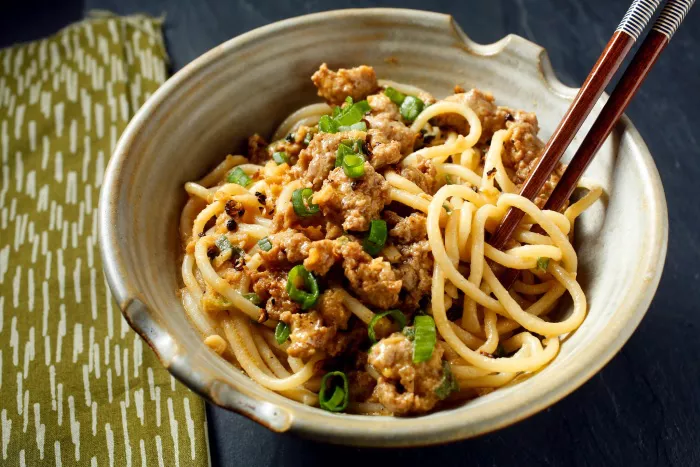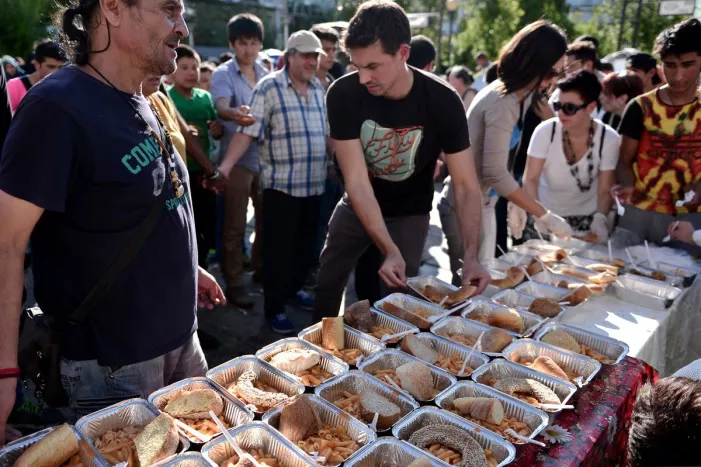Christmas is a time of year when people all around the world come together to celebrate the joy and spirit of the holiday season. One of the most cherished aspects of this festive time is the array of delicious Christmas foods that grace our tables. These traditional dishes vary from region to region, each reflecting the unique cultural influences and customs of the people who prepare them. In this article, we will take a gastronomic journey through some of the most iconic Christmas foods from different corners of the globe, exploring the rich history and significance behind these culinary traditions.
I. Christmas Foods in Western Europe
United Kingdom – Roast Turkey and Christmas Pudding
In the United Kingdom, the centerpiece of the Christmas feast is often a succulent roast turkey. The tradition of serving turkey dates back to the 16th century when it was introduced as an alternative to the more expensive goose. Roasted to perfection and served with all the trimmings, such as stuffing, roast potatoes, and Brussels sprouts, the Christmas turkey has become a symbol of holiday abundance and togetherness.
No Christmas meal in the UK is complete without the iconic Christmas pudding. This dense, rich dessert is made with suet, breadcrumbs, dried fruits, and a generous amount of brandy. It is traditionally prepared weeks or even months in advance, allowing the flavors to meld and mature. On Christmas Day, the pudding is set alight with a splash of brandy before serving, creating a spectacular and warm finale to the meal.
Germany – Stollen and Lebkuchen
In Germany, Christmas foods hold a special place in the hearts of many. Stollen, a sweet fruit bread, is a Christmas tradition that goes back over 500 years. It is filled with dried fruits, nuts, and spices, then dusted with powdered sugar to resemble a snowy landscape. The shape of Stollen is said to represent the swaddled baby Jesus, making it a poignant symbol of the season.
Lebkuchen, often referred to as German gingerbread, is another beloved Christmas treat. These spiced cookies come in various shapes and sizes, and they are often decorated with icing or chocolate. Lebkuchen is not only delicious but also a popular gift exchanged among family and friends during the holiday season.
II. Christmas Foods in Eastern Europe
Poland – Pierogi and Barszcz
In Poland, Christmas Eve, known as “Wigilia,” is a time of fasting and feasting on a variety of meatless dishes. Pierogi, a type of dumpling, are a staple of the Polish Christmas table. These dumplings are typically filled with ingredients such as mushrooms, cabbage, or potatoes, and they are served with sour cream. The shape of pierogi is said to symbolize the infant Jesus’ swaddling clothes.
Barszcz, a beetroot soup, is another essential Christmas food in Poland. This vibrant red soup is often served with small dumplings known as “uszka.” Barszcz’s color is thought to represent good fortune and joy for the coming year, making it a fitting choice for a holiday meal.
Russia – Olivier Salad and Kutia
In Russia, Christmas is celebrated on January 7th, following the Julian calendar. A popular Christmas dish is Olivier salad, a hearty and colorful potato salad made with peas, carrots, pickles, and bologna, all bound together with mayonnaise. The combination of flavors and textures in Olivier salad is a true crowd-pleaser and a must-have at the Russian Christmas table.
Kutia is a sweet, grain-based dish that holds great significance in Russian Christmas traditions. It is made from wheat berries, poppy seeds, honey, and sometimes nuts. Kutia is often the first dish served at the Christmas Eve meal, and it is associated with bringing good luck and prosperity in the coming year.
III. Christmas Foods in North America
United States – Christmas Ham and Eggnog
In the United States, Christmas foods vary from region to region, but some classics are enjoyed nationwide. Christmas ham, typically glazed with a mixture of brown sugar and pineapple juice, takes center stage on many American tables. The ham’s sweet and savory flavors are a perfect complement to the side dishes like mashed potatoes, green bean casserole, and cranberry sauce.
Eggnog, a creamy and spiced beverage made from eggs, milk, sugar, and nutmeg, is a beloved Christmas tradition. Whether enjoyed with or without a splash of rum or brandy, eggnog is a comforting drink that warms the soul during the holiday season.
Mexico – Tamales and Ponche
In Mexico, Christmas is a vibrant and joyous celebration, and the food is no exception. Tamales, filled with a variety of ingredients such as meats, cheese, or vegetables, are a cherished Christmas food. Making tamales is a labor-intensive process often done as a family or community activity, making it a symbol of togetherness and tradition.
Ponche, a warm fruit punch, is another staple of Mexican Christmas celebrations. Made with a combination of fruits like guavas, apples, and tejocotes (a type of hawthorn fruit), as well as spices and cane sugar, ponche is a delightful and aromatic drink that warms the hearts of those who partake in it.
IV. Christmas Foods in South America
Brazil – Bacalhau and Rabanada
In Brazil, Christmas foods are a reflection of the country’s diverse culinary heritage. Bacalhau, or salted codfish, is a popular choice for Christmas dinner. It is prepared in various ways, such as in a creamy casserole or deep-fried as bolinhos de bacalhau (codfish fritters). The tradition of serving bacalhau on Christmas dates back to Portuguese influences in Brazil.
Rabanada, a Brazilian take on French toast, is a sweet treat often enjoyed during the Christmas season. Slices of bread are soaked in a mixture of milk and sugar, then fried until golden brown and sprinkled with cinnamon and sugar. Rabanada is a simple yet comforting dessert that brings joy to many Brazilian households.
Peru – Panettone and Chocolatada
In Peru, Christmas foods blend indigenous traditions with European influences. Panettone, an Italian sweet bread studded with candied fruits and nuts, is a cherished Christmas treat. It is often enjoyed with a cup of hot chocolate or coffee and is a symbol of the holiday season’s sweetness.
Chocolatada, a festive hot chocolate, is a beloved beverage in Peru during Christmas. It is often made by combining hot chocolate with a sweet pastry or bread called “panetón.” Chocolatada gatherings are common, where friends and family come together to share this delightful drink and celebrate the holiday spirit.
V. Christmas Foods in Asia
Japan – Christmas Cake and KFC
In Japan, Christmas is not a traditional holiday, but it has been embraced with unique culinary traditions. Christmas cake, typically a sponge cake topped with whipped cream and strawberries, is a symbol of the holiday. Families often gather to enjoy this sweet treat on Christmas Eve.
Another unusual but popular Christmas food tradition in Japan is eating KFC (Kentucky Fried Chicken) on Christmas Day. Thanks to a clever marketing campaign in the 1970s, KFC has become synonymous with Christmas in Japan, and many people pre-order their holiday buckets of fried chicken well in advance.
Philippines – Lechon and Bibingka
In the Philippines, Christmas is a time of grand feasts and extravagant celebrations. Lechon, a whole roasted pig, is a centerpiece of many Filipino Christmas gatherings. The crispy skin and tender meat of the lechon are considered a delicacy and a symbol of abundance and festivity.
Bibingka, a type of rice cake, is a popular Christmas dessert in the Philippines. It is made from rice flour, coconut milk, and sugar and is traditionally cooked in banana leaves over hot coals. Bibingka is often served warm and garnished with cheese and salted egg, making it a delightful sweet and savory treat.
Conclusion
Christmas is a time when people come together to celebrate the joy of the season, and one of the most wonderful ways to do so is through the sharing of traditional Christmas foods. From roast turkey in the United Kingdom to tamales in Mexico and panettone in Peru, these culinary delights bring families and communities closer, evoking the warmth and nostalgia of the holiday spirit.



























